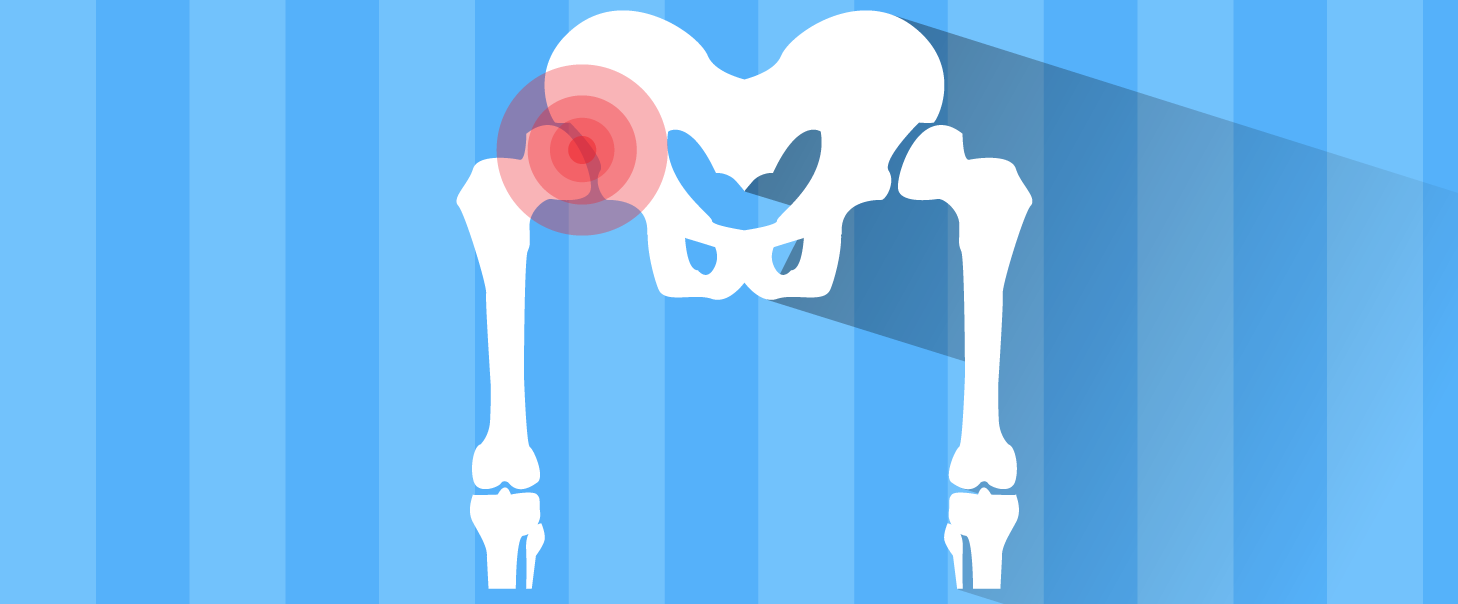Total Hip Replacement: Exercises for an Earlier Return to Normal Gait

The hip is the second most common joint replaced in the body after the knee. Many approaches to hip replacement exist, but they all have the same long-term outcome.1 Also, surgeons do not routinely refer patients to outpatient rehab following hip replacement as they do for knee and shoulder replacement.
Conventional Total Hip Replacement Rehab
In the conventional total hip replacement rehabilitation, we start out acutely with standard bed exercises, precaution training, gait training, transfer training, and ADL training. This program is usually completed after 2-3 weeks of home care or rehabilitation. Then, the patients are told by their surgeon that the only thing they have to do to further their post-op function is to WALK! They are also told that the leg length discrepancy would take care of itself in TIME!
I don’t know about you but if I was having my hip replaced I would like to accelerate my recovery and address all the impairments that occurred from the many years of abnormal gait caused by pain and disuse.
In fact, an article published by the Journal of Orthopaedic and Sports Physical Therapy in July 2015 specifically states that there are certain gait characteristics identified years before the hip replacement and that patients who lacked hip mobility – specifically hip extension – were the ones most likely to undergo a total hip replacement!2
Exercises for an Earlier Return to Normal Gait
So my question is, can you facilitate an earlier return to normal gait? Are there exercises that address the already established pre-op impairments?
I believe so. My observations and purely investigational studies have concluded that there is a more optimal way to rehabilitate these patients, especially today’s baby boomers striving to return to sports and activities they enjoyed before surgery. This approach involves the following:
1. Early lengthening of hip flexors
The first thing that needs to be achieved is obtaining early lengthening of the hip flexors. The heel slide exercise achieve this without extending the hip!
2. Early core exercises
The second objective is earlier core exercises. I know what you are thinking. How can therapists perform core exercises on day two post-op? You can! Core sets and chair core exercises are appropriate at all stages of the rehabilitation.
3. Facilitate the pelvic girdle and quadriceps
The third objective is functional exercises that are performed during the first 21 days of rehab and are referred to as “Gait Assistive Exercises.” My colleagues in the hospital and home care settings are fascinated at how safe and easy these exercises are to perform and how they challenge even the most high-level patients at this stage. I designed these exercises to functionally facilitate the pelvic girdle and quadriceps muscles. You probably never thought you could make a gluteus medius exercise or a quad set more exciting, but you can – with these exercises.
So please implement the Gait Assistive Exercises. I truly want your feedback as we all strive to be progressive and achieve higher outcomes, especially in this current competitive climate.
- Jacobs C. Comparable Function Seen at 6 Weeks with Direct Anterior Approach and Posterior Approach for Total Hip Arthroplasty. Presented at American Association of Hip and Knee Surgeons Annual Meeting . Nov 7-9 ;2014. Dallas Texas.
- Eitzen I et al. Gait Characteristics, Symptoms, and Function in Persons With Hip Osteoarthritis: A longitudinal Study With 6 to 7 YEARS OF Follow -up. JOSPT.2015;45:539-548

